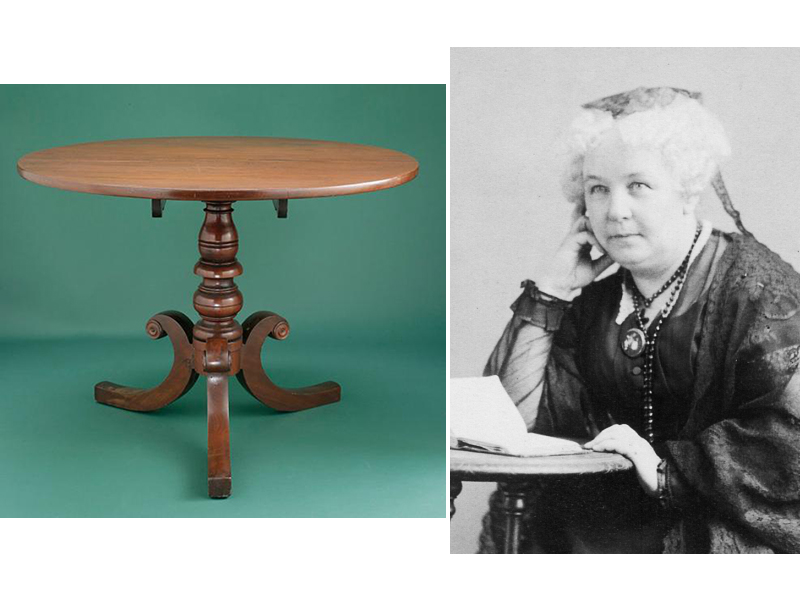Tea parties in the US often preceded great social change and this one, in 1848, was no different. Ahead of International Women’s Day on 8 March, we remember Elizabeth Cady Stanton, mother of women’s suffrage in the US.
When Jane Hunt invited Elizabeth Cady Stanton (1815–1902) to tea one July afternoon in 1848, little did she know that Cady Stanton and her three other guests would start an alliance to build the US suffrage movement. And when Cady Stanton penned her now-famous Declaration of Sentiments, it was fitting she drafted it on a mahogany tea table.

The declaration was her proposed version of the Declaration of Independence, which stated that “all men and women are created equal”. At a convention in her hometown of Seneca Falls, New York state, Cady Stanton gathered the signatures of 68 women and 32 men to establish the mission whereby women would claim the rights of citizenship at the time denied to them.
The tea table would later become famous; some sources state that it originally belonged to fellow suffragist Mary Ann M’Clintock before it was commandeered by Cady Stanton and her well-known co-conspirator Susan B Anthony. It was a portable piece of furniture that the duo would tote around with them to tea parties nationwide for decades, building momentum for women’s rights.
“While the fact that the suffragists drafted this document on a tea table might appear an incidental or casual detail, it is testimony to tea’s powerful and unexpected role in the suffrage movement. The suffragists didn’t just drink tea for refreshment, but used it as a central feature of their political strategy,” writes Sneha Mehta in Whetstone magazine.
The strategic use of tea ranged from tea parties that were actually political rallies or fundraisers, to the sale of Equality Tea by mail, which helped reach women unable to attend the parties, many of whom lived rurally.
The US did eventually recognise (white) women’s right to vote in 1919, after which the tea table found its way to the National Museum of American History as an iconic piece of feminist furniture.
Note: Though Cady Stanton was an abolitionist as well as a suffragist, she did voice racist thoughts about former slaves, believing that freed Black men should not be able to vote before white women, ignoring the intersectionality necessary for true equality movements.
This article originally appeared in AUSTCS enews 5 March 2024.